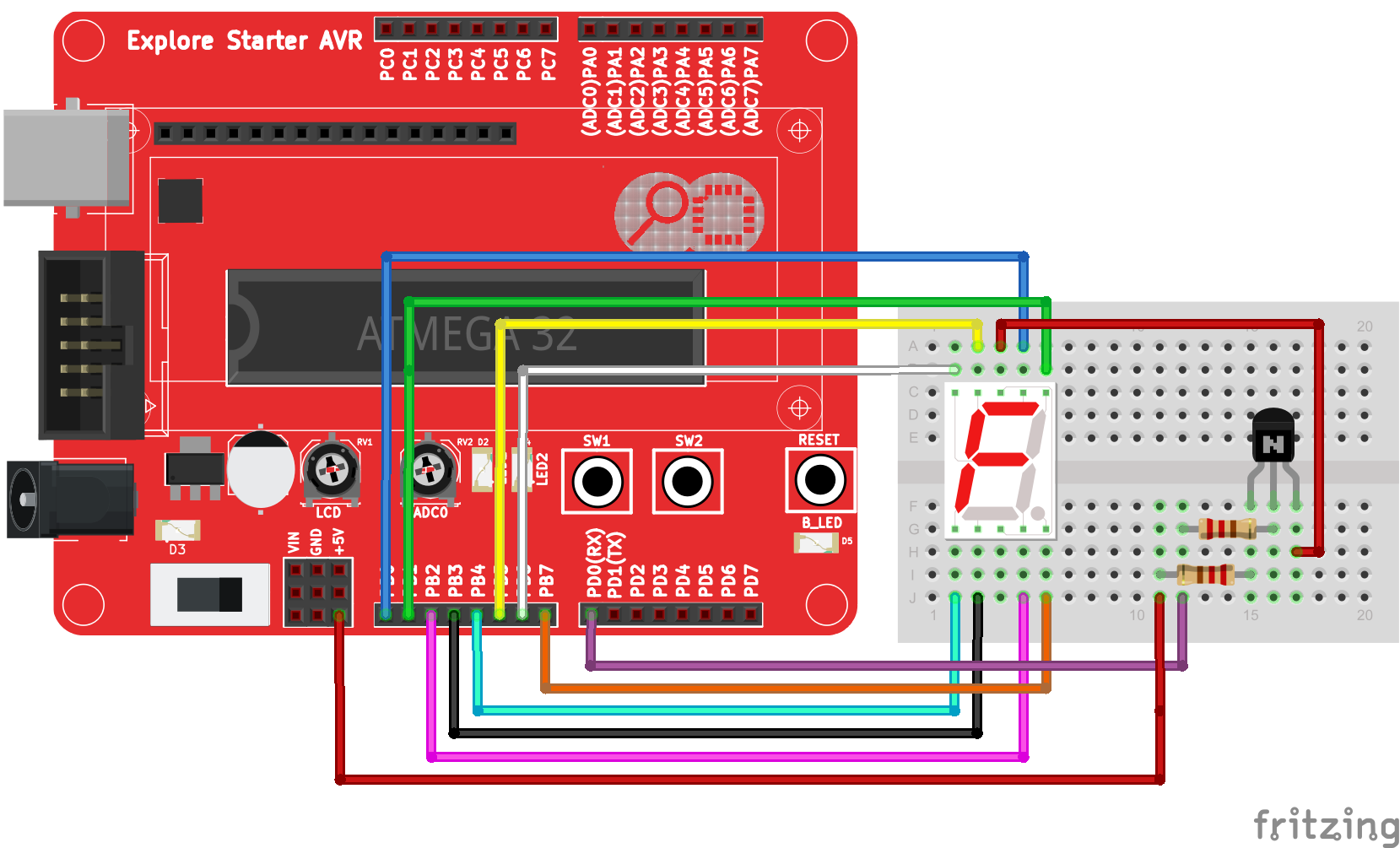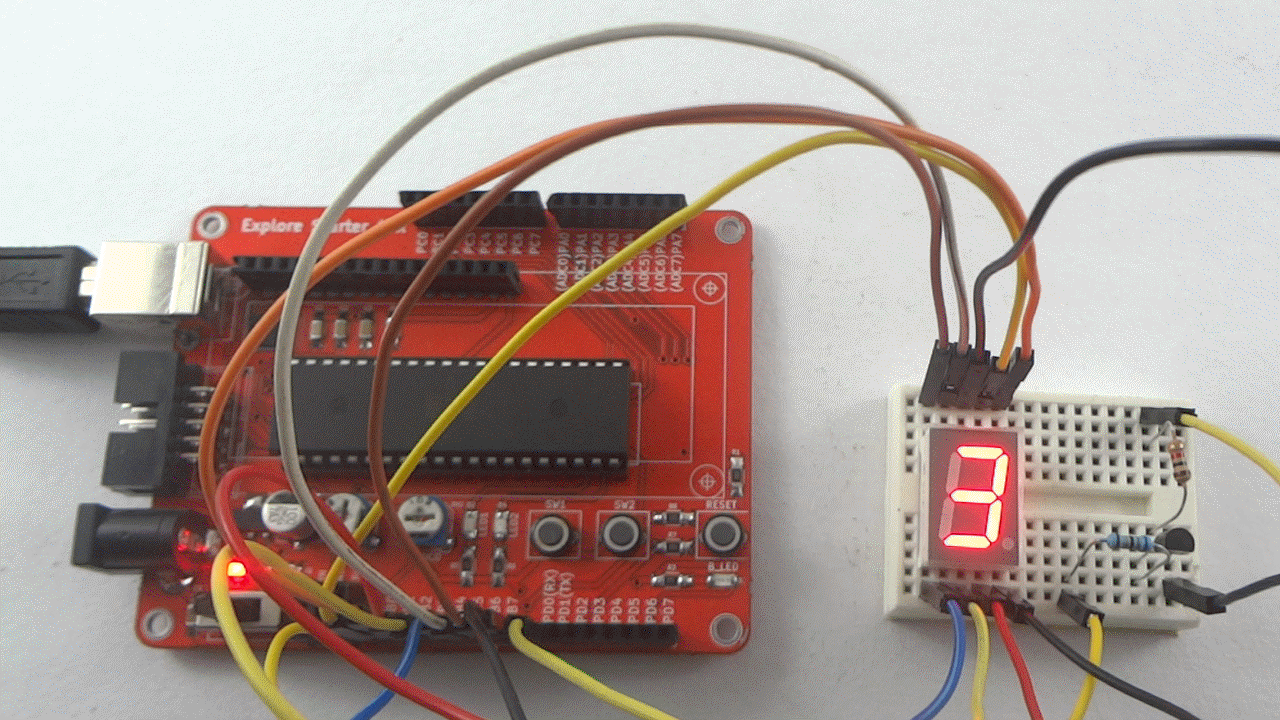Difference between revisions of "Interfacing Seven Segment Display with Starter AVR"
| Line 16: | Line 16: | ||
[[file:0_7Segment_Starter_AVR.gif]] | [[file:0_7Segment_Starter_AVR.gif]] | ||
| − | =Downloads= | + | = Downloads= |
| + | Download the complete project folder from the below link: | ||
| + | https://github.com/ExploreEmbedded/ATmega32_ExploreStarterAvr/archive/master.zip<br> | ||
| + | |||
| + | |||
| + | Have a opinion, suggestion , question or feedback about the article let it out here! | ||
{{DISQUS}} | {{DISQUS}} | ||
Latest revision as of 15:25, 20 April 2016
Now we will go further and will interface more complex peripherals. In this tutorial we will interface common anode 7 segment display to the starter AVR board. To get idea about basics of 7 segment display check out our Interfacing Seven Segment Displays with AVR tutorial.
Contents
Basic
In this example we are using common anode type of 7 segment display. To give positive voltage to the common anode I am using BC547, N-Type transistor as a driver and PD0 is used to drive this driver. PD0 is connected to the base of transistor through 68 Ohm resistor and VCC is given to collector through 1K resistor. Emitter of transistor is given to common pin of 7 segment display. Data lines of display is connected to PORTB. Do the connection as shown in hookup and flash the code.
Hookup
Code
Demo
Downloads
Download the complete project folder from the below link:
https://github.com/ExploreEmbedded/ATmega32_ExploreStarterAvr/archive/master.zip
Have a opinion, suggestion , question or feedback about the article let it out here!


